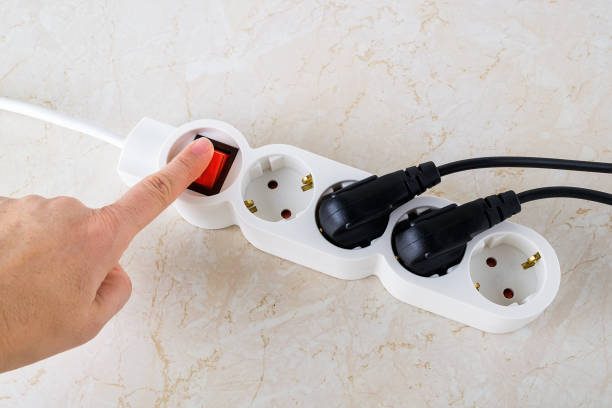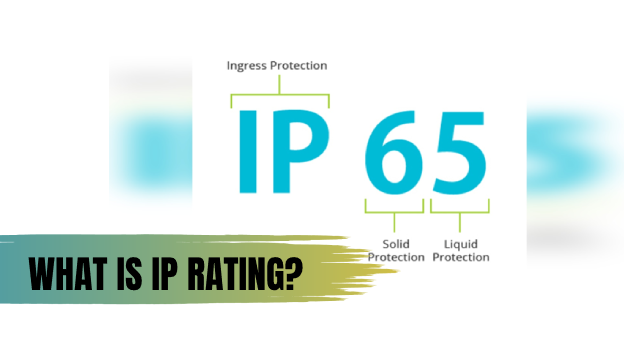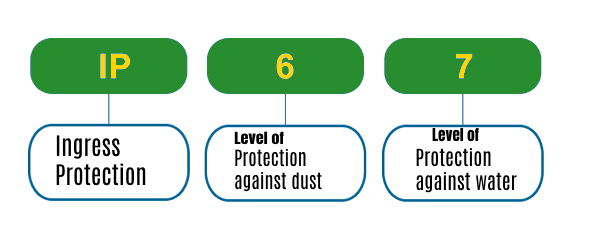
Explore common reasons why LED lights won’t turn on, from faulty wiring and incorrect installations to dead bulbs and power […]

Many digital appliances today are advertised as watertight or waterproof. However, how can you determine whether these products are genuinely waterproof and can resist water damage?
Any liquid particle that penetrates the device might cause electrical equipment malfunction and even complete damage.
To protect equipment from water ingress and improve the longevity of these electronic products, digital companies design enclosures with high IP ratings.
These IP enclosures ensure the devices are protected against water damage and maintain their performance.
On average, the greater the IP value, the more water protected the device is from solids or moisture penetration.
IP rated equipment are becoming more popular with widespread use to meet a growing production of devices that require protection and the IP rating is an effective measure of how resistant a gadget is to foreign items getting inside.
An IP rating stands for “Ingress Protection Mark,” that indicates how well a gadget is protected against solid objects and liquids penetration, and effectively against possible damage.
Even small amounts of water can seriously damage electronic devices, as corrosion and overall malfunction are serious risks.
An IP rating is a two digit grading system assigned to the casing of an electrical or mechanical device, to give consumers a precise indicator of the device’s resistance to a variety of harmful intrusion.
A third symbol is sometimes used to describe additional details, although it is often excluded.
The first digit indicates the amount of protection against solid items, with a value of 0 indicating no protection and a value of 6 indicating the highest level of protection.
The second digit indicates the amount of protection against fluids, with a value of 0 indicating no protection and a value of 9 indicating the highest level of protection.
The third additional letter may be used to indicate various aspects of the enclosure’s protection, typically as mechanical protection against oils or high voltages, but as it’s used for very specific purposes, it is rarely mentioned on daily equipment.

After the testing and certification process at an authorized institution, a product will receive a numerical grade interpreted using the IP rating chart.
If you see an X instead of either digit, it implies the enclosure has not been verified or the testing process cannot be applied.
The IP rating’s first number indicates how well the enclosure protects against solid external particles such as dust, incidental touch, instruments, and cables, as follows:
0 (X) – There is no protection against particle impact or penetration.
1 – Protection against any significant physical contact, such as the palm, but no coverage from purposeful impact from a body part or solid particles larger than 50mm in diameter.
2 – Protection against solid items with a diameter of 12.5 mm or larger, such as fingers.
3 – Protection from tools, thick cables, and solid particles with a diameter of 2.5mm or larger.
4 – Protection from most cables, thin fasteners, and other 1mm or larger particles.
5 – Protection from dusty particles in sufficient quantities that can obstruct the device’s proper functionality.
6 – Full dust intrusion with complete protection against solid particles.
The IP rating’s second digit indicates the level of protection from fluid incursions, as follows:
0 (X) – There is no protection.
1 – Liquid protection only when it is dripping vertically.
2 – When the enclosures are inclined at a 15° angle from their regular position, vertically pouring water has no damaging impact.
3 – Protection against liquid mist at any angle up to 60 degrees vertically.
4 – Protection against water splashes from different angles.
5 – All angles are protected against low-pressure liquid streams.
6 – All angles are protected against high-pressure liquid streams.
6K – All angles are protected against high-power fluid jets under increased pressure.
7 – Total immersion protection for thirty minutes up to a depth of 1 meter.
8 – Protection in deep water dive and under higher pressures.
9 – Protection from prolonged immersion in water under the product’s stated conditions.
9K – Protection against high-pressure, high-temperature water stream, and pressure washing methods.
Extra letters are added to give additional details about the device’s protection:
F – Oil resistance.
H – High voltage protection.
M – Monitoring during the water test.
S – Standing still during the water test.
W – Weather conditions protection.
| FIRST NUMBER | SECOND NUMBER | ||
| IP | LEVEL OF PROCTECTION | IP | LEVEL OF PROTECTION |
| 0 | No Protection | 0 | No Protection |
| 1 | Protection against a solid object up to 50mm | 1 | Protection against vertical drop of water |
| 2 | Protection against a solid object up to 12.5mm | 2 | Protection against direct water spray up to vertical 15 degree |
| 3 | Protection against solid object above 2.5mm | 3 | Protection against direct sprays of water up to vertical 60 degree |
| 4 | Protection against solid objects above 1mm | 4 | Protection against water sprayed against all direction |
| 5 | Protection against dust without harmful deposits | 5 | Protection against low-pressure jets of water from all direction |
| 6 | Total protection against dust | 6 | Protection against strong jets of water |
| 7 | Protection against immersion for 30 under 1m water | ||
| 8 | Protection against long period of immersion under pressure |
